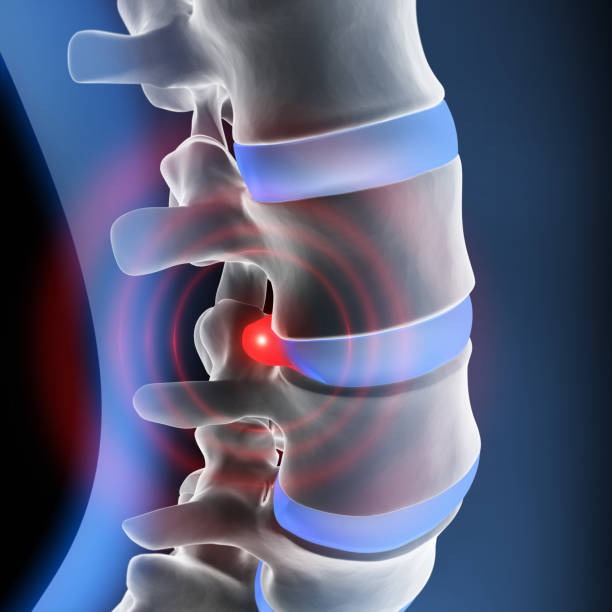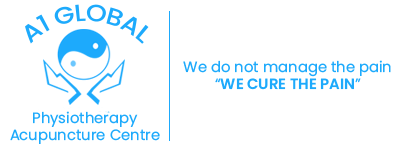+918043692724

This is your website preview.
Currently it only shows your basic business info. Start adding relevant business details such as description, images and products or services to gain your customers attention by using Boost 360 android app / iOS App / web portal.
Non-Surgical Disc Bulge Treatment Options: PEMF, D...

Non-Surgical Disc Bulge Treatment Options: PEMF, Decompression, Dry Needling, and Targeted Exercise Therapy Many people suffer from disc bulges, a common cause of back pain that can reach beyond the lower back. These issues can make everyday activities feel unbearable and reduce quality of life. Thankfully, invasive surgery isn't the only choice. Medical technology now offers effective, non-surgical options that help ease pain and restore movement. This guide explores four powerful treatments—PEMF therapy, spinal decompression, dry needling, and targeted exercise therapy—that can help you manage disc bulges safely and effectively. Understanding Disc Bulges and Their Causes What Is a Disc Bulge? A disc bulge occurs when the soft cushion between your spinal bones, called an intervertebral disc, pushes outward beyond its normal boundary. Unlike a herniated disc, where the soft center breaks through the outer layer, a bulge involves a gentle expansion. It can press on nearby nerves, causing pain, numbness, or weakness. Doctors use MRI scans to see the extent of the bulge and diagnose the problem. Causes and Risk Factors Several factors can lead to disc bulges: Age-related wear and tear: As you age, discs lose water and become less flexible. Poor posture: Sitting slouched or bending awkwardly puts extra pressure on your spine. Repetitive strain: Heavy lifting or repetitive movements increase risk. Obesity: Carrying extra weight stresses your back. Genetics: Some people inherit weaker discs or a tendency for bulges. The Importance of Conservative Management Many studies show that non-surgical therapies work well for disc bulges, especially early on. About 70-80% of patients find relief without surgery. Surgical options are usually reserved for severe cases when other treatments fail. Starting conservative care early keeps your options open and reduces risks. PEMF Therapy for Disc Bulge Relief What Is PEMF Therapy? Pulsed Electromagnetic Field (PEMF) therapy uses magnetic pulses to stimulate your body's cells. These waves penetrate tissues and encourage healing at a cellular level. Many patients report less pain and better mobility after PEMF treatments. Scientific Evidence Supporting PEMF Research shows PEMF can reduce inflammation, improve circulation, and accelerate tissue repair. Clinical trials have demonstrated significant pain relief in people with back issues. Experts believe that pulsating fields activate the body's natural healing energy, speeding recovery in damaged spinal tissues. Practical Application and Benefits Typically, PEMF sessions last 20-30 minutes and are scheduled regularly over several weeks. Benefits include: Reduced pain and stiffness Better blood flow to injured tissues Faster healing of damaged discs Safe for most people, with minimal side effects Actionable Tips If considering PEMF, look for certified providers with experience in spinal care. Combining PEMF with physical therapy or decompression often yields even better results. Always discuss your options with a healthcare professional to create a personalized plan. Spinal Decompression Therapy as a Non-Surgical Solution Overview of Spinal Decompression Spinal decompression involves gently stretching the spine to relieve pressure on discs. This can be done with specialized machines, manual therapy, or traction devices. Think of it like pulling a taffy to stretch out and realign the soft tissues inside. How Decompression Alleviates Disc Bulges By reducing pressure, decompression encourages the disc to rehydrate and regain its normal shape. This can help retract herniated parts and reduce nerve pressure. Many patients experience less pain and improved mobility after regular sessions. Choosing the Right Decompression Method Options include: In-office, motorized decompression therapy: Done with professional equipment. At-home traction devices: Usually less powerful but more convenient. Always seek providers who are trained and use FDA-approved equipment. Avoid unqualified practitioners to prevent complications. Actionable Tips Before starting decompression, consult a spine specialist. If you have osteoporosis, pregnancy, or metal implants, decompression might not be right for you. Pairing decompression with physical therapy can maximize benefits. Dry Needling and Its Role in Disc Bulge Management What Is Dry Needling? Dry needling uses thin needles inserted into tight muscle knots or trigger points to relieve tension. Unlike acupuncture, it targets specific muscle areas to improve pain and function. The aim is to relax muscles that may be pulling on your spine or irritating nerves. Benefits for Disc-Related Pain Relieving muscle tightness reduces nerve impingement and helps restore normal movement. Increased blood flow promotes healing within tissues, potentially speeding up recovery of the bulged disc. Clinical Evidence and Success Stories Research shows dry needling can lower pain levels and improve flexibility. Many physical therapists report excellent results when combining needling with stretching and strengthening exercises, especially for chronic back pain linked to disc issues. Actionable Tips Find a licensed physical therapist experienced in dry needling. It pairs well with targeted exercises, making it easier to regain strength and flexibility. Targeted Exercise Therapy for Long-Term Relief The Philosophy behind Targeted Exercises Exercise works best when it’s specific. Strengthening surrounding muscles gives your spine better support. Improving posture and flexibility keeps discs healthy and lower the chance of future bulges. Types of Effective Exercises Core exercises: Planks, bridges, and abdominal stabilizers. Stretching routines: Hamstring and hip flexor stretches. Mobility drills: Gentle spine rotations and pelvic tilts. Posture corrections: Using ergonomic tools or practicing proper sitting habits. Customizing Exercise Programs A physical therapist can evaluate your specific needs and craft a personalized plan. Consistency is key, but avoid overdoing it—gradual progress prevents setbacks. Actionable Tips Commit to daily routines and monitor your symptoms. Adjust exercises as your strength improves or if pain flares up. Patience pays off when recovering from disc bulges. Combining Therapies for Optimal Outcomes Combining treatments like PEMF, spinal decompression, dry needling, and targeted exercises can create a powerful healing synergy. For example, PEMF can speed healing, decompression can provide relief, dry needling reduces muscle tension, while exercises promote long-term stability. A coordinated plan guided by experienced spine specialists ensures you get the best results. Conclusion Effective management of a disc bulge without surgery is possible through a combination of innovative therapies. PEMF therapy, spinal decompression, dry needling, and targeted exercises each play a vital role. Early intervention and consistent practice increase the chances of recovery while reducing reliance on invasive procedures. Consult healthcare professionals to develop a personalized plan suited to your needs. Empower yourself with knowledge—your journey to a healthier back can be non-surgical and successful. back pain physiotherapy best physiotherapy clinic near me best physiotherapy in chennai best physiotherapy near me physio clinic in egmore physio clinic in nungambakkam physio clinic in chetpet physio clinic in egmore physio centre egmore physiotherapy clinic near egmore physiotherapy clinic in nungambakkam physiotherapy centre back pain physiotherapy back pain physiotherapy near me

